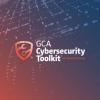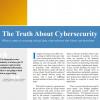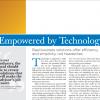In the wake of numerous high profile data breaches over the past several years, cybersecurity is an issue on the mind of just about every advisor.
It’s particularly dangerous for high-net-worth families, as in addition to the semi-random chance that most clients face from having their information included among that of millions of others in a large data breach, wealthy families tend to offer a more visible target for more individualized cybercrime.
Andy Hart, Managing Partner of Delegate Advisors, has some valuable experience and, more importantly, advice to help other advisors, in this area.
“In all my years advising clients, I would say that the threat of cybercrime has never been higher, with wire fraud as the biggest threat. We’ve had several recent instances where hackers were able to secure access to a client’s email account. The hackers then “squatted” on their account, waiting for an opportunity to send a fraudulent wire request. To combat this threat, establishing strict protocols for money movement isn’t enough.” Hart says.
In fact, according to Hart, for certain clients a potential answer to cyber threats is to take a technological step backwards: “I used to think email was a secure way to communicate with our clients, but not anymore, especially after witnessing firsthand how sophisticated the cyber criminals have become. Now more than ever, an old-fashioned phone call to a client instead of an email can potentially save them from being a victim of cyber fraud. Thankfully, we’ve prevented each of the attempts to defraud our clients. By being more than a bit paranoid about money movement, we hope to defeat all future attempts as well.”
Here are seven other tips from Hart to help protect your wealthy family clients from cybersecurity threats.









